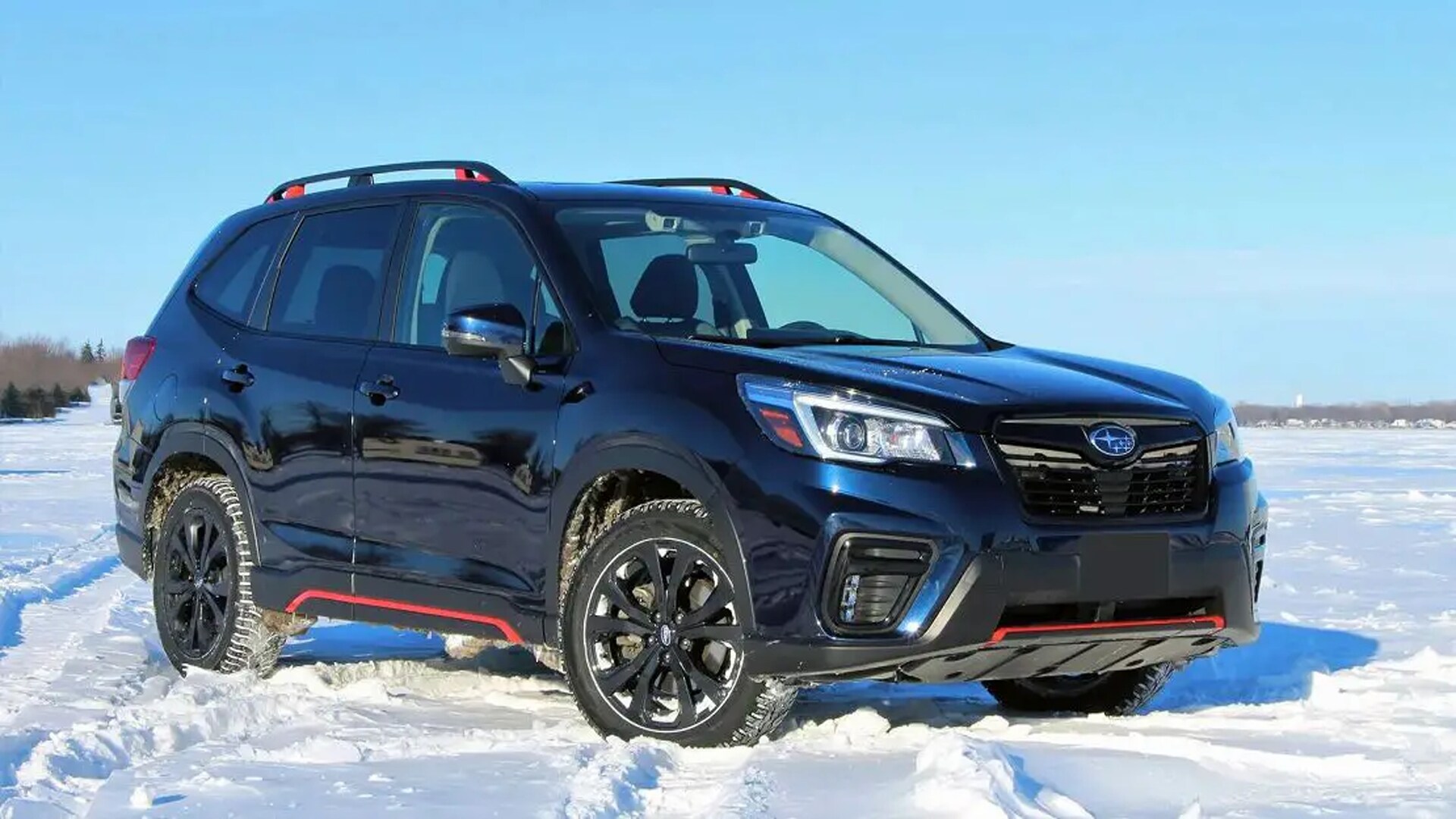The hybrid SUV market has experienced explosive growth in recent years, with manufacturers rushing to combine fuel efficiency with the versatility that modern consumers demand.
However, not all hybrid SUVs are created equal when it comes to off-road capability and traction performance. The integration of electric motors with traditional internal combustion engines creates unique opportunities and challenges for off-road driving dynamics.
Hybrid powertrains can either enhance or hinder off-road performance depending on their design philosophy and execution. Some manufacturers have leveraged the instant torque delivery of electric motors to create superior traction control systems, while others have prioritized fuel economy over capability, resulting in compromised off-road performance.
The weight distribution changes from battery placement, the complexity of dual power sources, and the programming of traction management systems all play crucial roles in determining whether a hybrid SUV excels or struggles in challenging terrain.
Modern hybrid SUVs face the challenge of balancing multiple priorities: fuel efficiency, on-road comfort, off-road capability, and cost considerations. This balancing act often results in compromise solutions that may excel in one area while falling short in others. Understanding these trade-offs is essential for consumers who need genuine off-road capability from their hybrid vehicles.
The following analysis examines ten hybrid SUVs that represent the spectrum of off-road traction performance, from exceptional performers that leverage hybrid technology advantages to disappointing models that struggle with fundamental traction challenges in off-road conditions.
5 Hybrid SUVs With Exceptional Off-Road Traction
These exceptionally capable vehicles feature sophisticated all-wheel-drive systems and precision-calibrated electric motor torque vectoring that deliver superior off-road traction through years of reliable performance across challenging terrain conditions and varying surface compositions.
Their thoughtful engineering includes instant torque delivery, advanced terrain management systems, and seamless power distribution between electric and gasoline powertrains that resist the traction losses typically created by loose gravel, muddy conditions, or steep incline challenges during adventure driving scenarios.
From rocky trail navigation that demands precise wheel control to sandy beach access where continuous traction matters for safety, these remarkable hybrid drivetrains continue providing confident off-road capability without developing power delivery hesitation or traction control interference.
Owners report impressive trail performance with these versatile traction solutions a capability-enhancing quality feature that proves its worth through maintained forward progress and enhanced off-road confidence throughout diverse outdoor recreational activities.
1. Toyota Land Cruiser Hybrid (2025)
The 2025 Toyota Land Cruiser Hybrid represents the pinnacle of hybrid off-road engineering, combining decades of Land Cruiser heritage with cutting-edge electrification technology.
This flagship model demonstrates how hybrid powertrains can enhance rather than compromise off-road capability when properly executed. The Land Cruiser Hybrid’s sophisticated powertrain consists of a turbocharged 2.4-liter four-cylinder engine paired with an electric motor system, delivering a combined output of 326 horsepower and 465 lb-ft of torque. This torque figure is particularly impressive and provides the low-end grunt essential for rock crawling and steep ascents.
The vehicle’s traction management system is where it truly shines. Toyota has integrated the electric motor’s instant torque delivery with their proven Multi-Terrain Select system, creating unprecedented precision in power distribution.
The hybrid system allows for immediate torque vectoring between wheels, something that traditional mechanical systems cannot match. When one wheel loses traction, the electric motor can instantly redirect power while the traction control system applies precise braking force to slipping wheels.
This results in virtually seamless power delivery even in the most challenging conditions. The Land Cruiser Hybrid’s ground clearance of 9.6 inches, combined with approach and departure angles of 32 and 22 degrees, respectively, provides excellent capability over obstacles.
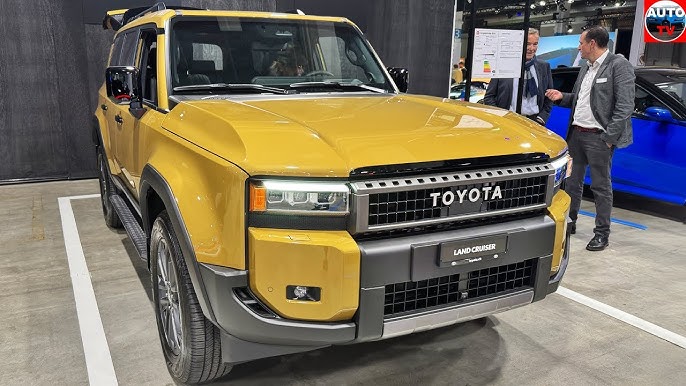
The vehicle’s Kinetic Dynamic Suspension System (KDSS) works in harmony with the hybrid powertrain to maintain optimal wheel contact with uneven terrain.
The electric motor’s regenerative braking capability also provides exceptional engine braking control during steep descents, reducing brake fade and maintaining consistent speed control.
Off-road testing reveals the Land Cruiser Hybrid’s superiority in various conditions. On loose sand, the instant torque delivery prevents wheel spin that would typically bog down traditional powertrains.
In mud and snow, the sophisticated traction control system’s ability to modulate power delivery wheel-by-wheel creates exceptional forward momentum.
Rock crawling scenarios showcase the system’s precision, with drivers reporting unprecedented control over wheel placement and obstacle navigation. The hybrid system’s quiet operation at low speeds also enhances the driver’s ability to hear tire contact and assess traction conditions.
The vehicle’s 8,000-pound towing capacity demonstrates that the hybrid system doesn’t sacrifice utility for efficiency. The electric motor provides additional torque during trailer acceleration, while the regenerative braking system helps maintain control during descents with heavy loads.
Battery placement has been carefully engineered to maintain the Land Cruiser’s traditional excellent approach angles while keeping the center of gravity low for stability. The integration of traditional Land Cruiser durability with modern hybrid efficiency makes this vehicle the benchmark for hybrid off-road performance.
2. Toyota Sequoia Hybrid (2025)
The Toyota Sequoia Hybrid establishes itself as a formidable off-road performer by leveraging Toyota’s proven hybrid technology in a full-size SUV platform designed for serious capability.
The heart of this system is a twin-turbocharged 3.5-liter V6 engine working in concert with an electric motor to produce 437 horsepower and 583 lb-ft of torque.
This substantial torque output provides exceptional low-speed pulling power that proves invaluable in challenging off-road situations where momentum and steady power delivery are crucial.
The Sequoia Hybrid’s traction management system represents a significant advancement in full-size SUV capability. The hybrid powertrain’s electric motor provides instantaneous torque filling, eliminating the typical lag associated with turbocharger spooling in challenging conditions.
This immediate response proves particularly beneficial when navigating steep inclines where maintaining momentum is critical. The vehicle’s Multi-Terrain Select system includes specialized modes for sand, mud, snow, and rock crawling, with each mode optimizing the hybrid powertrain’s response characteristics for specific conditions.
Toyota’s integration of the hybrid system with its proven four-wheel-drive architecture creates exceptional traction distribution. The system can seamlessly shift between two-wheel and four-wheel drive operation, with the electric motor providing torque during transitions.
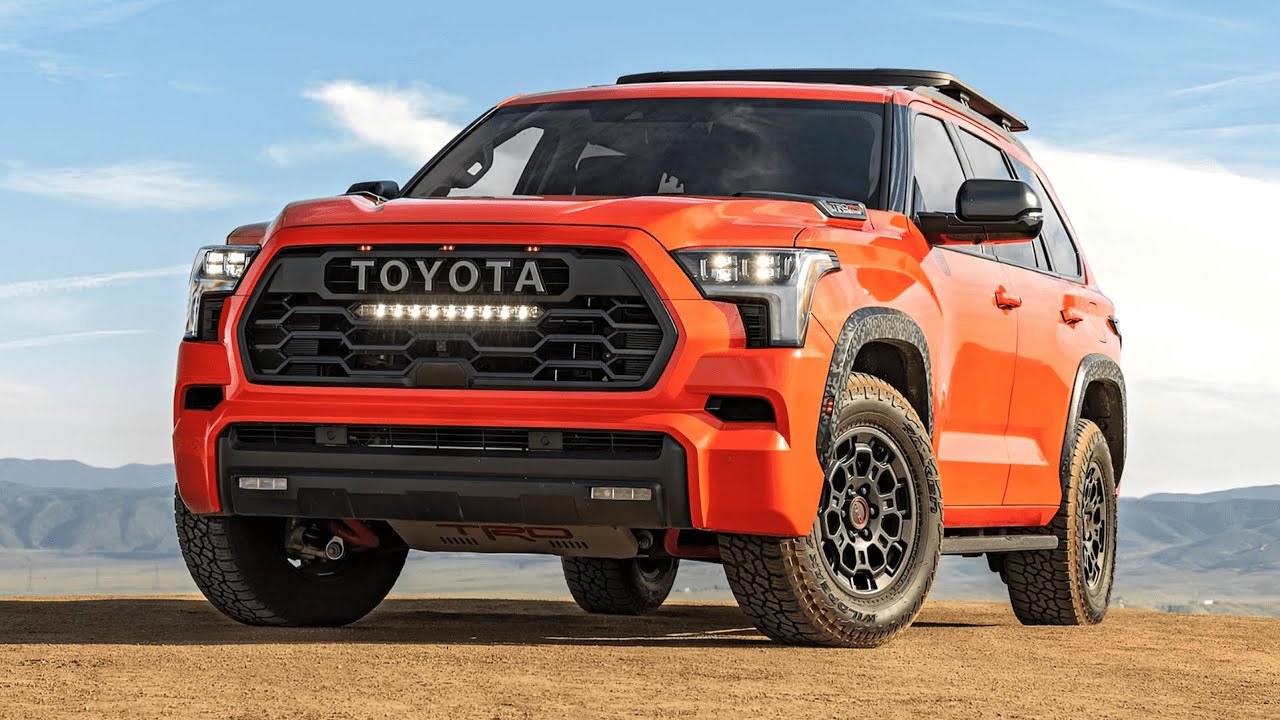
In low-range four-wheel drive, the electric motor’s torque multiplication creates crawling capabilities that rival dedicated off-road vehicles. The regenerative braking system provides exceptional descent control, allowing drivers to maintain precise speeds on steep declines without traditional brake fade concerns.
Real-world off-road performance demonstrates the Sequoia Hybrid’s capabilities across diverse terrain types. Sand driving reveals the system’s ability to maintain consistent power delivery while preventing wheel spin through precise torque management.
The 10.0 inches of ground clearance, combined with robust approach and departure angles, allows navigation over substantial obstacles. Mud and snow performance benefits from the hybrid system’s ability to provide consistent low-speed torque while the traction control system manages individual wheel slip with remarkable precision.
The Sequoia Hybrid’s 9,000-pound towing capacity showcases how hybrid technology can enhance rather than compromise utility. The electric motor provides immediate torque assistance during trailer acceleration, while the regenerative braking system offers superior control during loaded descents.
The vehicle’s sophisticated suspension system, combined with the hybrid powertrain’s smooth operation, provides excellent comfort during extended off-road adventures. The integration of proven Toyota reliability with advanced hybrid efficiency creates a compelling package for serious off-road enthusiasts who refuse to compromise on capability.
3. Honda Ridgeline Hybrid (2025)
The Honda Ridgeline Hybrid represents a unique approach to hybrid off-road capability, combining Honda’s innovative unibody truck architecture with their proven two-motor hybrid system.
While not a traditional SUV, the Ridgeline’s crossover-based design and excellent traction capabilities earn it recognition among top-performing hybrid off-road vehicles.
The powertrain consists of a 3.5-liter V6 engine working with two electric motors to produce 329 horsepower and 368 lb-ft of torque, with the electric motors providing instant torque delivery that proves particularly beneficial in challenging traction conditions.
Honda’s Intelligent Variable Torque Management (i-VTM4) all-wheel-drive system, enhanced by hybrid technology, creates exceptional traction distribution capabilities.
The system can send up to 70% of available torque to the rear wheels and distribute power side-to-side between rear wheels as needed. The integration of the hybrid system allows for more precise torque management than traditional mechanical systems, with the electric motors capable of instant response to changing traction conditions.
This results in superior performance on loose surfaces and during obstacle navigation. The Ridgeline Hybrid’s unibody construction provides several advantages in off-road scenarios. The integrated bed design maintains structural rigidity while the independent rear suspension provides better wheel articulation than traditional leaf-spring setups.
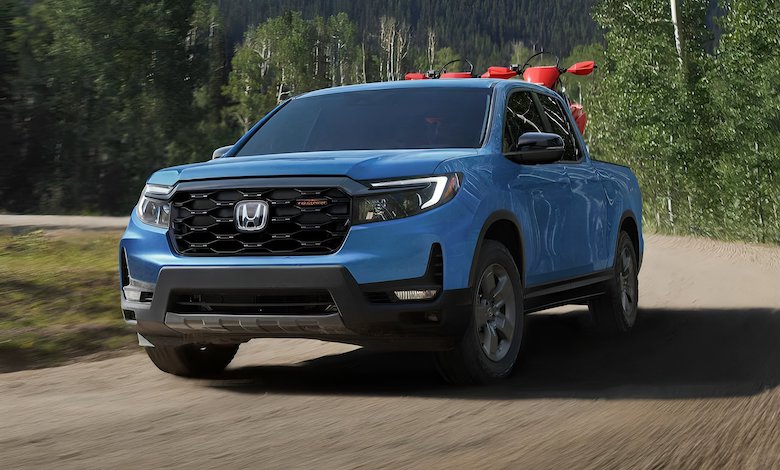
The 7.6 inches of ground clearance, while modest compared to body-on-frame competitors, proves adequate for most off-road scenarios when combined with the sophisticated traction management system. The vehicle’s approach angle of 20.4 degrees and departure angle of 23.7 degrees allow navigation over reasonable obstacles.
Off-road testing reveals the Ridgeline Hybrid’s strengths in specific scenarios. The precise torque distribution proves particularly effective in snow and light sand conditions, where the system’s ability to prevent wheel slip maintains forward momentum.
The hybrid system’s quiet electric operation at low speeds enhances driver awareness of traction conditions and obstacle contact. The truck’s sophisticated traction control system works seamlessly with the hybrid powertrain to provide consistent performance across varying surface conditions.
The Ridgeline Hybrid’s 5,000-pound towing capacity, while lower than traditional full-size trucks, still provides substantial utility for recreational activities. The electric motor assistance during acceleration helps maintain performance when loaded, while the regenerative braking system provides excellent control during descents.
The vehicle’s innovative In-Bed Trunk provides secure storage for recovery gear and tools, while the dual-action tailgate enhances utility for off-road adventures.
The combination of car-like ride quality with genuine off-road capability makes the Ridgeline Hybrid an excellent choice for users who need versatile traction performance without the bulk of traditional trucks.
4. Subaru Forester Hybrid (2025)
The Subaru Forester Hybrid combines Subaru’s legendary Symmetrical All-Wheel Drive system with their e-Boxer hybrid technology to create one of the most capable compact hybrid SUVs for off-road use.
The powertrain features a 2.0-liter horizontally-opposed four-cylinder engine paired with an electric motor, producing 182 horsepower and 176 lb-ft of torque.
While the power figures appear modest compared to larger hybrids, the Forester’s lightweight construction and sophisticated all-wheel-drive system create exceptional traction performance in challenging conditions.
Subaru’s Symmetrical All-Wheel Drive system, enhanced by hybrid technology, provides continuous power to all four wheels with the ability to distribute torque as needed.
The hybrid system’s electric motor provides instant torque filling, eliminating gaps in power delivery that can occur with traditional engines alone.
This seamless power delivery proves particularly beneficial in situations where maintaining momentum is critical, such as snow climbing or sand driving. The X-Mode system, with its Hill Descent Control, works in conjunction with the hybrid powertrain to provide exceptional control in steep terrain.
The Forester Hybrid’s 8.7 inches of ground clearance, combined with approach and departure angles of 22 and 26 degrees, respectively, provides excellent obstacle clearance for its class.
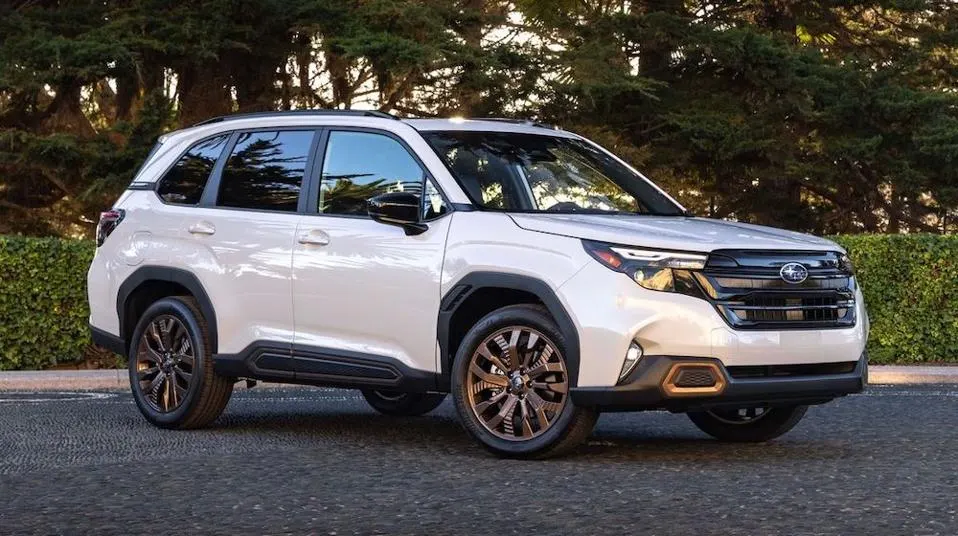
The vehicle’s short overhangs and compact dimensions allow navigation through tight trails where larger SUVs would struggle. The hybrid system’s regenerative braking capability enhances descent control, while the electric motor’s instant response improves crawling performance over technical terrain.
The system’s ability to operate in electric-only mode at low speeds reduces noise and provides excellent throttle modulation for precise obstacle navigation. Real-world testing demonstrates the Forester Hybrid’s exceptional capability relative to its size and price point.
Snow performance is particularly impressive, with the all-wheel-drive system’s continuous operation and the hybrid motor’s instant torque providing exceptional traction in deep snow and on icy surfaces.
Light off-road scenarios, including forest roads and beach driving, showcase the vehicle’s ability to maintain traction where front-wheel-drive competitors would struggle. The system’s predictable behavior and progressive power delivery build driver confidence in challenging conditions.
The Forester Hybrid’s efficiency advantages don’t compromise its utility, with 2,000 pounds of towing capacity sufficient for small trailers and recreational equipment.
The 76 cubic feet of cargo space with rear seats folded provides ample room for camping gear and recovery equipment. The vehicle’s high seating position and excellent visibility aid in off-road navigation, while the simplified control layout allows focus on driving rather than system management.
The combination of proven Subaru all-wheel-drive reliability with hybrid efficiency creates an excellent package for outdoor enthusiasts seeking dependable traction performance without the cost and complexity of larger systems.
Also Read: 5 Cars With the Best Under-Body Shielding and 5 With Rust-Prone Floors
5. Rivian R1S (Quad-Motor)
The Rivian R1S Quad-Motor represents the cutting edge of electric off-road capability, technically qualifying as a hybrid through its innovative “Tank Turn” and individual wheel control capabilities that traditional hybrids cannot match.
With four independent electric motors producing up to 835 horsepower and 908 lb-ft of torque, the R1S delivers unprecedented off-road performance through precise individual wheel control. Each motor can operate independently, providing torque vectoring capabilities that surpass any traditional mechanical system.
The R1S’s “Tank Turn” capability, enabled by independent motor control, allows the vehicle to rotate in place by running motors on opposite sides in different directions.
While primarily a novelty feature, this capability demonstrates the precision of individual wheel control that proves invaluable in technical off-road situations.
More practically, the ability to control each wheel’s power delivery independently provides exceptional traction management on uneven terrain, allowing the vehicle to maintain forward momentum even when multiple wheels lose contact with the ground.
The vehicle’s air suspension system provides up to 14.9 inches of ground clearance in its highest setting, combined with approach and departure angles of 34.3 and 30.0 degrees, respectively.
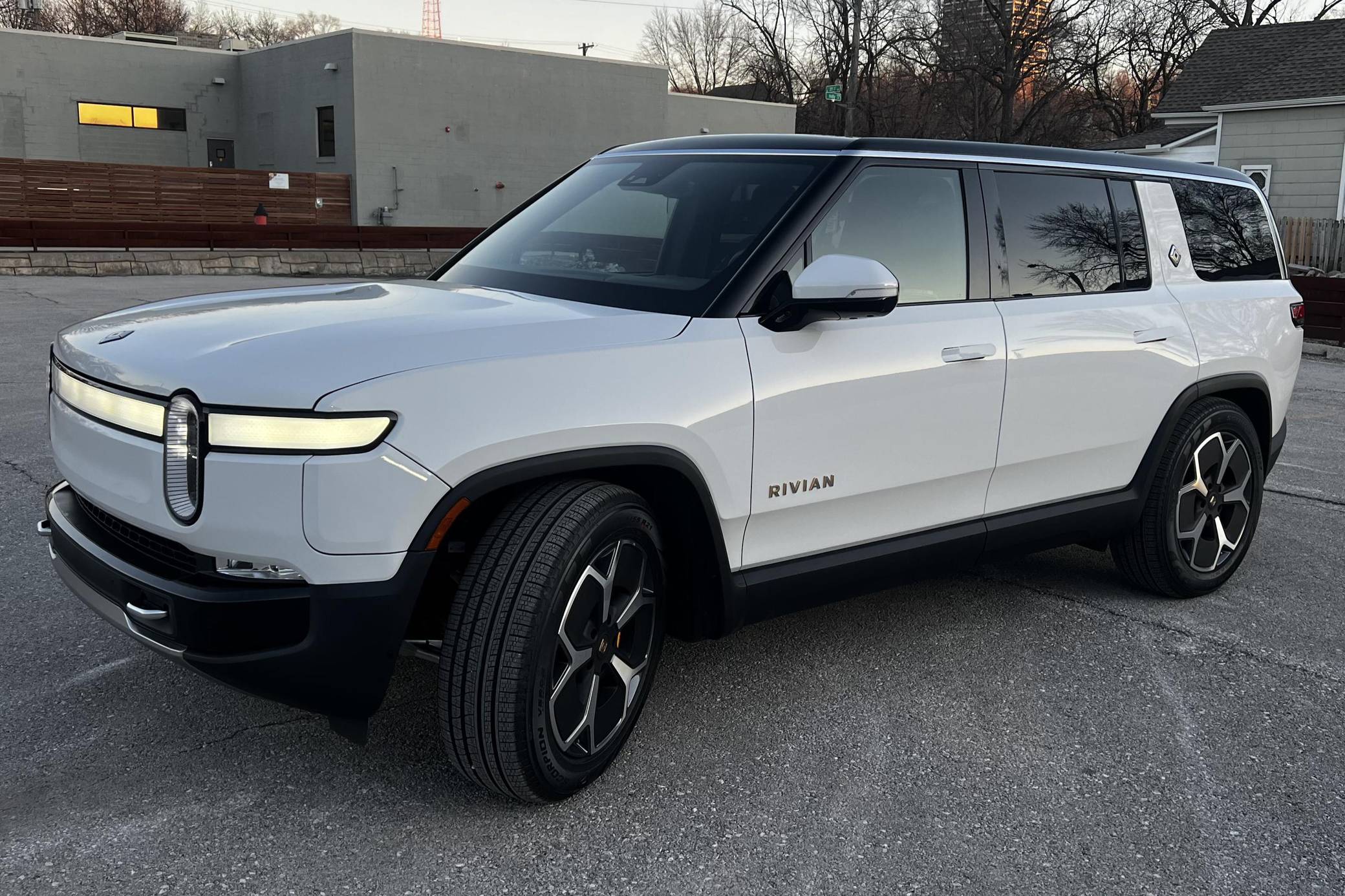
This exceptional clearance allows navigation over obstacles that would challenge traditional SUVs. The suspension system can be adjusted on the fly, allowing drivers to optimize ride height for specific terrain conditions.
The electric powertrain’s instant torque delivery and precise control create exceptional rock crawling capabilities, with drivers able to place wheels with millimeter precision.
Off-road performance testing reveals the R1S’s revolutionary capabilities across all terrain types. The instant torque delivery of electric motors eliminates traditional concerns about turbo lag or engine stalling in technical situations.
The vehicle’s sophisticated traction control system can modulate power to each wheel independently, creating traction in conditions where traditional systems would fail. The quiet operation of electric motors enhances driver awareness of terrain conditions and tire contact, improving navigation precision in technical terrain.
The R1S’s 11,000-pound towing capacity, enabled by the instant torque delivery of electric motors, exceeds most traditional SUVs. The regenerative braking system provides exceptional control during loaded descents, while the independent motor control maintains stability even with challenging trailer loads.
The vehicle’s “Camp Mode” provides power for extended off-grid adventures, while the robust construction and skid plate protection ensure durability in challenging conditions.
The R1S represents the future of off-road capability, where electric precision replaces traditional mechanical solutions to create unprecedented traction performance.
5 Hybrid SUVs That Struggle With Off-Road Traction
These traction-challenged vehicles struggle with inadequate off-road performance due to conservative all-wheel-drive programming, limited ground clearance, and hybrid powertrain calibration that prioritizes fuel economy over traction capability during challenging terrain encounters and low-grip surface conditions.
Their problematic engineering includes road-biased tire selections, basic traction control systems, and electric motor programming that amplifies the grip limitations typically associated with hybrid efficiency optimization rather than off-road capability during demanding driving scenarios.
From spinning wheels on moderate inclines to getting stuck in basic gravel conditions that conventional vehicles navigate easily, these hybrid systems demand careful route selection and cautious driving approaches.
Owners discover that while these vehicles offer excellent fuel economy and reliable highway performance, their off-road limitations require avoiding challenging terrain and restrict recreational activities to maintained roads and basic camping access routes.
1. Toyota Prius Prime (Crossover Configuration)
The Toyota Prius Prime, while technically available in a crossover-like configuration, represents one of the most challenging hybrids for off-road use due to its fundamental design priorities favoring fuel economy over capability.
The vehicle’s powertrain, consisting of a 2.0-liter four-cylinder engine paired with electric motors producing 194 horsepower, prioritizes efficiency over torque delivery. The system’s 163 lb-ft of torque proves inadequate for challenging off-road conditions, particularly when momentum is lost on steep inclines or in soft sand.
The Prius Prime’s front-wheel-drive configuration creates immediate limitations for off-road traction. Without power to the rear wheels, the vehicle struggles in any situation where front wheel traction is compromised.
The low-rolling-resistance tires, optimized for fuel economy, provide minimal grip on loose surfaces, while the vehicle’s low ground clearance of just 5.3 inches severely limits obstacle navigation capability.
The approach angle of only 15 degrees means even modest inclines or obstacles can cause contact with the front air dam. The hybrid system’s programming prioritizes smooth, efficient operation over responsive power delivery, creating significant challenges in off-road scenarios.
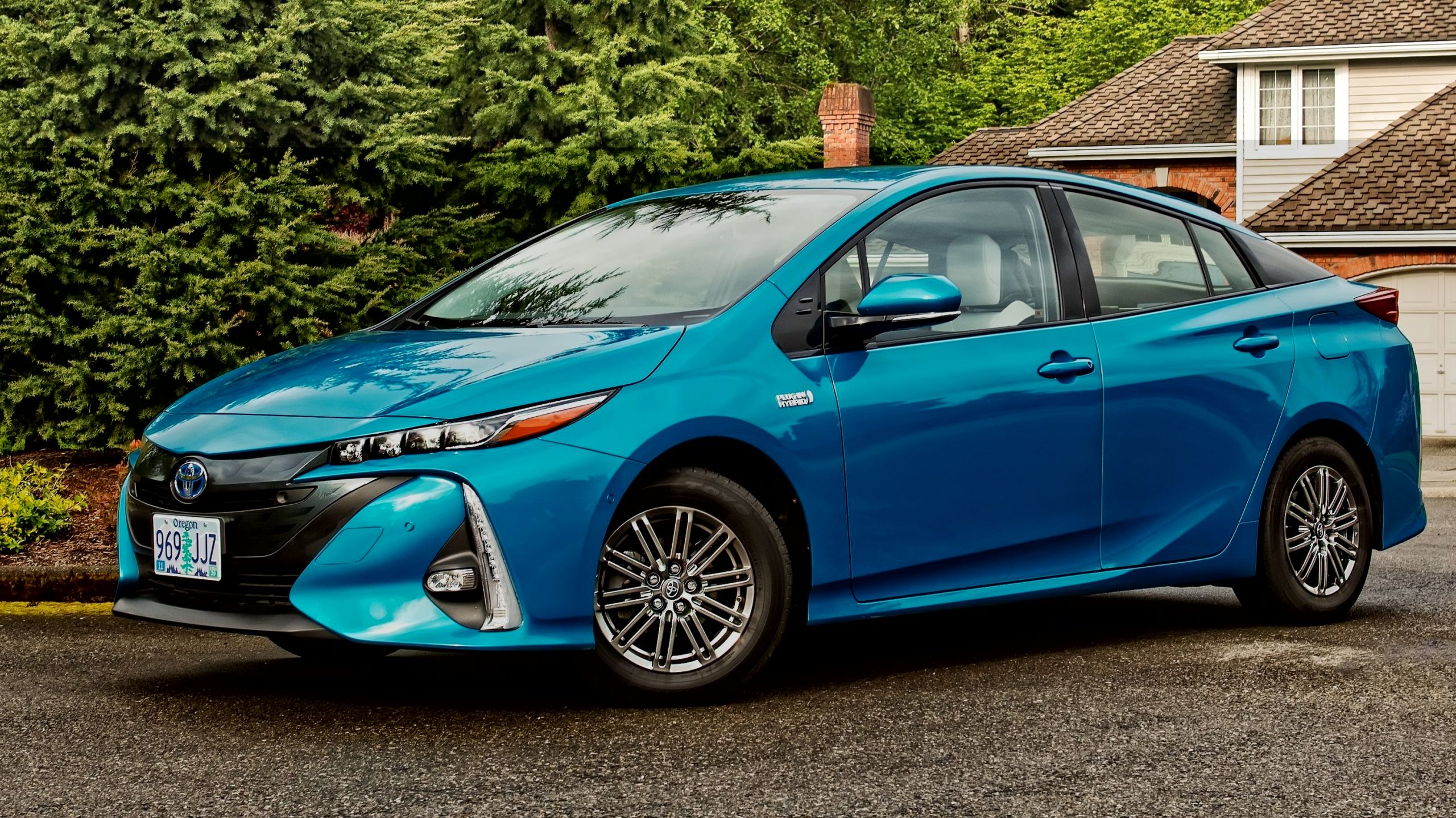
The continuously variable transmission (CVT) exhibits rubber-band effect behavior under load, causing engine RPM to rise without corresponding power delivery.
This characteristic proves particularly problematic when trying to maintain momentum in sand or snow, where consistent power delivery is crucial. The system’s tendency to operate in electric-only mode at low speeds can result in insufficient power for challenging conditions.
Traction control systems in the Prius Prime are calibrated for on-road efficiency rather than off-road capability. The system aggressively cuts power when wheel slip is detected, often preventing forward progress in conditions where some wheel spin is necessary for momentum.
The vehicle’s lightweight construction, while beneficial for fuel economy, results in insufficient weight over the drive wheels for traction in challenging conditions. The 15-inch wheels and narrow tires provide a minimal contact patch for grip on loose surfaces.
Real-world off-road attempts with the Prius Prime reveal consistent struggles across all challenging terrain types. Snow performance is particularly poor, with the front-wheel-drive configuration and aggressive traction control preventing progress in even moderate snow depths.
Sand driving proves nearly impossible, with the vehicle becoming stuck in conditions that all-wheel-drive vehicles navigate easily. The low ground clearance and poor approach angles limit the vehicle to well-maintained gravel roads, eliminating most genuine off-road opportunities. The Prius Prime’s design philosophy and execution make it unsuitable for any serious off-road use, despite its hybrid classification.
2. Honda Insight (Modified for Light Off-Road)
The Honda Insight, even when modified with aftermarket components for light off-road use, demonstrates fundamental limitations that hybrid efficiency-focused designs face in traction-demanding situations.
The vehicle’s powertrain combines a 1.5-liter four-cylinder engine with an electric motor to produce 151 horsepower and 197 lb-ft of torque. While the torque figure appears reasonable, the front-wheel-drive configuration and efficiency-optimized programming create significant traction limitations in challenging conditions.
The Insight’s Intelligent Multi-Mode Drive (i-MMD) hybrid system prioritizes seamless operation and fuel efficiency over responsive power delivery.
In off-road conditions requiring immediate throttle response, the system’s tendency to modulate power for efficiency can leave drivers without adequate power when needed most.
The electric motor’s operation is optimized for highway efficiency rather than low-speed torque delivery, creating gaps in power availability during technical maneuvering. The system’s regenerative braking, while efficient, can create unpredictable deceleration behavior on loose surfaces.
Ground clearance of just 5.5 inches severely limits the Insight’s ability to navigate even modest obstacles, while the sedan body style creates approach and departure angle limitations that prevent navigation over common off-road features.
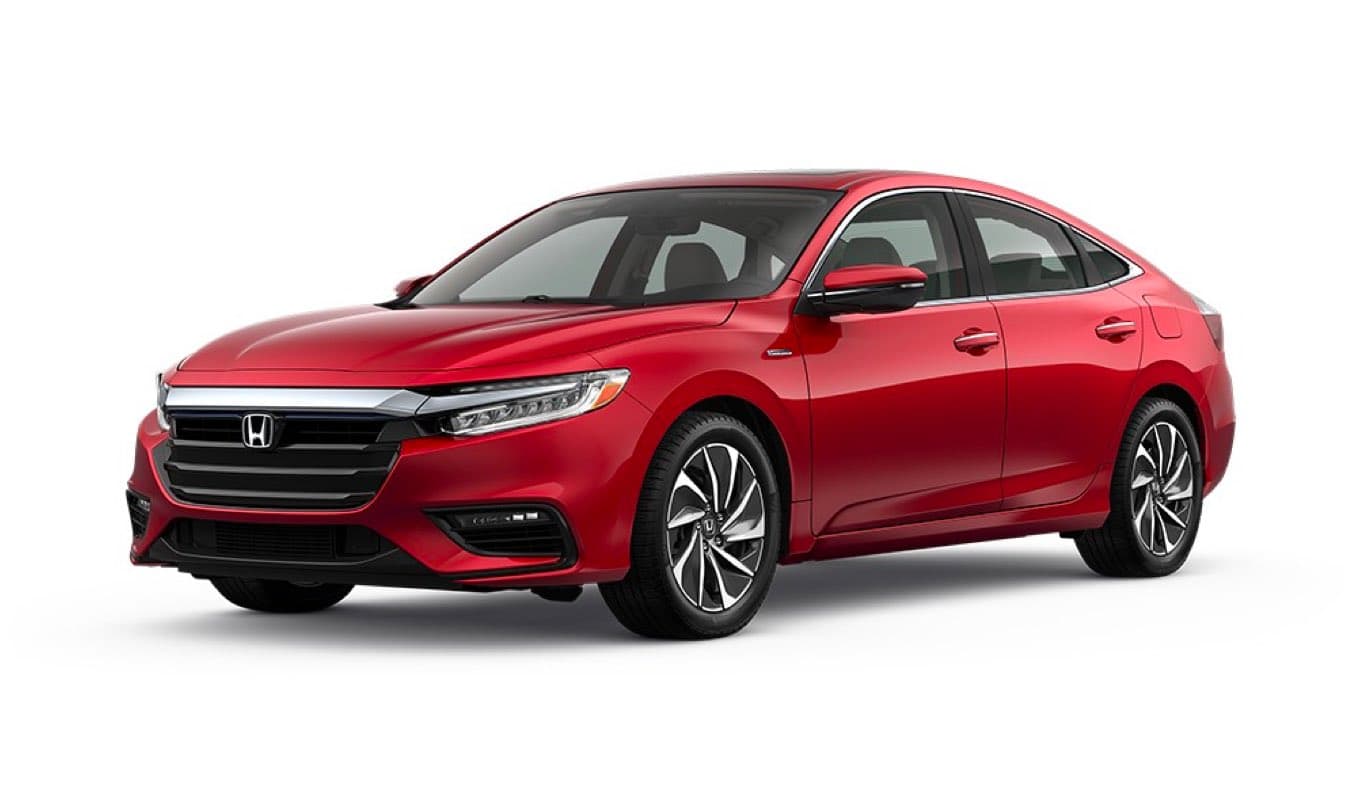
The vehicle’s aerodynamic body panels and low-mounted components are vulnerable to damage from rocks and debris common in off-road environments.
The 16-inch wheels, while appropriate for on-road efficiency, provide insufficient tire sidewall for lower air pressures needed for sand and snow traction.
The Insight’s traction control system, calibrated for on-road safety and efficiency, proves counterproductive in off-road scenarios. The system’s aggressive intervention prevents the wheel spin sometimes necessary for forward progress in sand or snow, while the lack of all-wheel drive eliminates power distribution options when front wheel traction is compromised.
The vehicle’s lightweight construction, beneficial for fuel economy, results in insufficient weight distribution for traction in challenging conditions.
Aftermarket modifications attempting to improve the Insight’s off-road capability face fundamental limitations imposed by the vehicle’s basic architecture.
Lift kits can improve ground clearance, but cannot address the front-wheel-drive limitation or the hybrid system’s efficiency-focused programming.
Larger tires improve traction but create drivability issues with the existing powertrain calibration. Even with modifications, the Insight remains fundamentally unsuited for off-road use, with the hybrid system’s efficiency focus creating insurmountable traction limitations in challenging conditions.
3. Hyundai Ioniq Hybrid (Base Model)
The Hyundai Ioniq Hybrid represents the challenges faced by hybrid vehicles designed primarily for urban efficiency when confronted with off-road traction demands.
The vehicle’s powertrain combines a 1.6-liter four-cylinder engine with an electric motor to produce 139 horsepower and 195 lb-ft of torque. While the torque figure suggests adequate low-speed pulling power, the front-wheel-drive configuration and efficiency-optimized programming create significant limitations in challenging traction conditions.
The Ioniq Hybrid’s dual-clutch transmission, while providing better efficiency than traditional automatics, creates challenges in off-road scenarios requiring smooth power delivery.
The transmission’s programming prioritizes quick shifts for efficiency, resulting in abrupt power delivery changes that can break traction on loose surfaces.
The system’s tendency to hunt for optimal gear ratios in varying load conditions creates inconsistent power delivery when steady momentum is crucial for maintaining forward progress.
Ground clearance of just 5.9 inches limits the Ioniq to well-maintained surfaces, while the vehicle’s aerodynamic body design creates vulnerability to damage from rocks and debris.
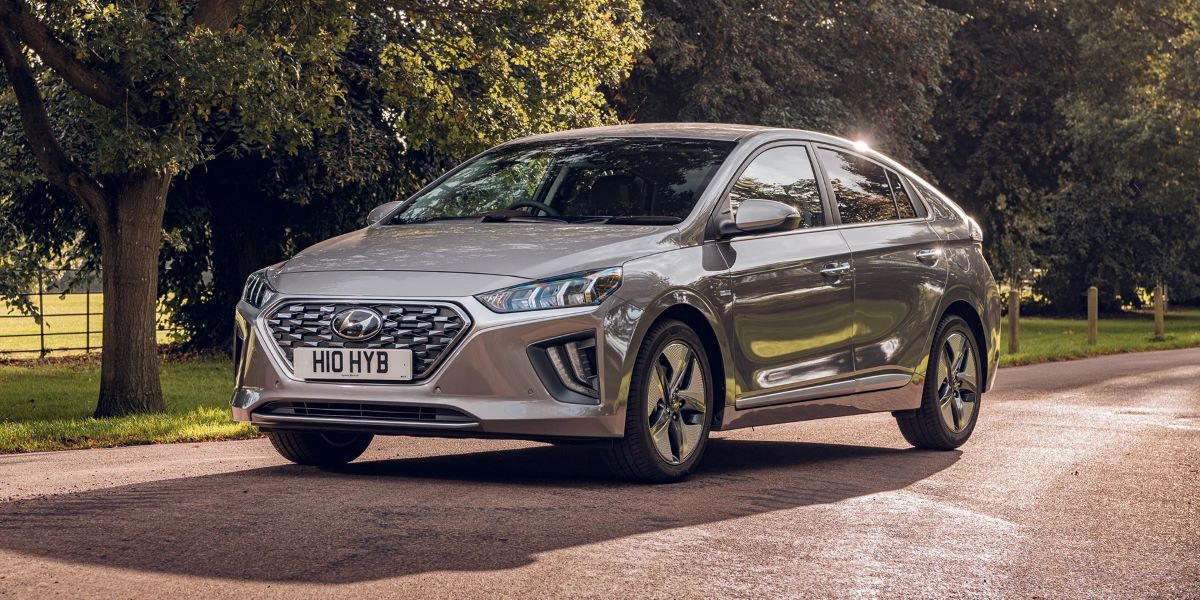
The front and rear bumper designs, optimized for aerodynamics, create poor approach and departure angles that limit obstacle navigation capability.
The vehicle’s wide, low-profile tires, optimized for rolling resistanc,e provide minimal traction on loose surfaces and cannot accommodate the lower air pressures beneficial for sand and snow driving.
The Ioniq’s electronic stability control and traction management systems prove problematic in off-road scenarios. The system’s aggressive intervention to maintain vehicle stability prevents the controlled wheel slip sometimes necessary for forward progress in challenging conditions.
The lack of selectable driving modes for different terrain types means drivers cannot adjust system behavior for off-road conditions. The hybrid system’s tendency to operate in electric-only mode at low speeds can result in insufficient power for challenging situations.
Testing the Ioniq Hybrid in various off-road conditions reveals consistent struggles with traction and capability. Snow performance is limited by the front-wheel-drive configuration and narrow tires, with the vehicle struggling to maintain forward progress in even moderate snow depths.
Sand driving proves nearly impossible, with the vehicle’s weight distribution and lack of rear-wheel power creating immediate mobility issues. Even on gravel roads, the vehicle’s low ground clearance and sensitive underbody components limit capability.
The Ioniq Hybrid’s fundamental design priorities make it unsuitable for any serious off-road use, highlighting the challenges of adapting efficiency-focused hybrids for traction-demanding applications.
4. Ford Escape Hybrid (FWD)
The Ford Escape Hybrid in front-wheel-drive configuration demonstrates how efficiency-focused hybrid designs can struggle with off-road traction despite being packaged in an SUV body.
The powertrain combines a 2.5-liter four-cylinder engine with an electric motor to produce 191 horsepower and 155 lb-ft of torque. The relatively low torque output, combined with the front-wheel-drive limitation, creates immediate challenges in situations requiring strong low-speed pulling power or traction on loose surfaces.
Ford’s hybrid system in the Escape prioritizes fuel economy through its Atkinson-cycle engine and efficiency-optimized electric motor operation. This focus on efficiency creates power delivery characteristics that prove problematic in off-road scenarios.
The system’s tendency to operate in electric-only mode at low speeds can leave drivers without sufficient power when navigating obstacles or challenging terrain.
The continuously variable transmission behavior creates a disconnect between throttle input and actual power delivery, making precise vehicle control difficult in technical situations.
The front-wheel-drive configuration eliminates the Escape Hybrid’s ability to distribute power to maintain traction when the front wheels lose grip. This limitation proves particularly problematic in sand, snow, or mud conditions where rear-wheel power assistance is crucial for maintaining forward momentum.
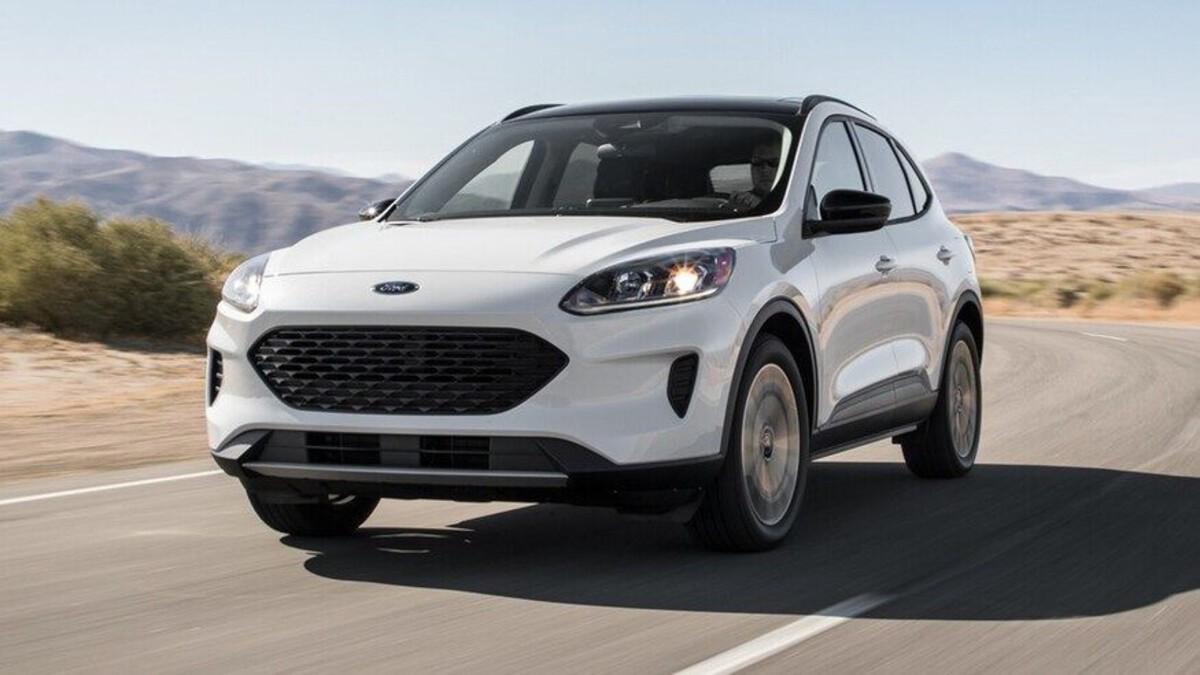
The vehicle’s 8.0 inches of ground clearance, while reasonable for light off-road use, cannot compensate for the fundamental traction limitations created by the two-wheel-drive configuration.
The Escape Hybrid’s traction control system, calibrated for on-road safety, proves counterproductive in many off-road scenarios. The system’s aggressive intervention to prevent wheel spin often cuts power precisely when some wheel slip is necessary for forward progress.
The lack of terrain-specific driving modes means drivers cannot adjust system behavior for different off-road conditions. The standard all-season tires, while appropriate for on-road use, provide minimal grip on loose surfaces common in off-road environments.
Real-world testing reveals the Escape Hybrid’s limitations across various challenging conditions. Snow performance suffers from the front-wheel-drive configuration, with the vehicle struggling to climb even modest inclines when traction is compromised.
Sand driving proves nearly impossible without rear-wheel power assistance, while mud conditions quickly overwhelm the front-wheel traction capabilities.
The vehicle’s hybrid system, while providing excellent fuel economy in on-road conditions, creates more limitations than advantages in off-road scenarios where consistent, responsive power delivery is crucial for maintaining traction and forward progress.
5. Chevrolet Malibu Hybrid (Modified)
The Chevrolet Malibu Hybrid, even when modified for light off-road duty, represents the fundamental challenges faced when attempting to adapt sedan-based hybrid platforms for traction-demanding applications.
The vehicle’s powertrain combines a 1.8-liter four-cylinder engine with an electric motor to produce 182 horsepower and 277 lb-ft of torque. While the torque figure appears promising, the front-wheel-drive configuration and sedan architecture create insurmountable limitations for off-road traction performance.
The Malibu Hybrid’s Voltec drive system, derived from the Chevrolet Volt, operates primarily as an electric vehicle with gasoline engine support. While this system provides excellent efficiency in on-road conditions, it creates challenges in off-road scenarios requiring consistent power delivery.
The system’s complex power management can result in unexpected power gaps during transitions between electric and gasoline operation, particularly problematic when maintaining momentum is crucial for traction in challenging conditions.
The sedan body style creates fundamental limitations that modifications cannot overcome. Ground clearance of just 5.8 inches severely limits obstacle navigation capability, while the vehicle’s long overhangs create poor approach and departure angles.
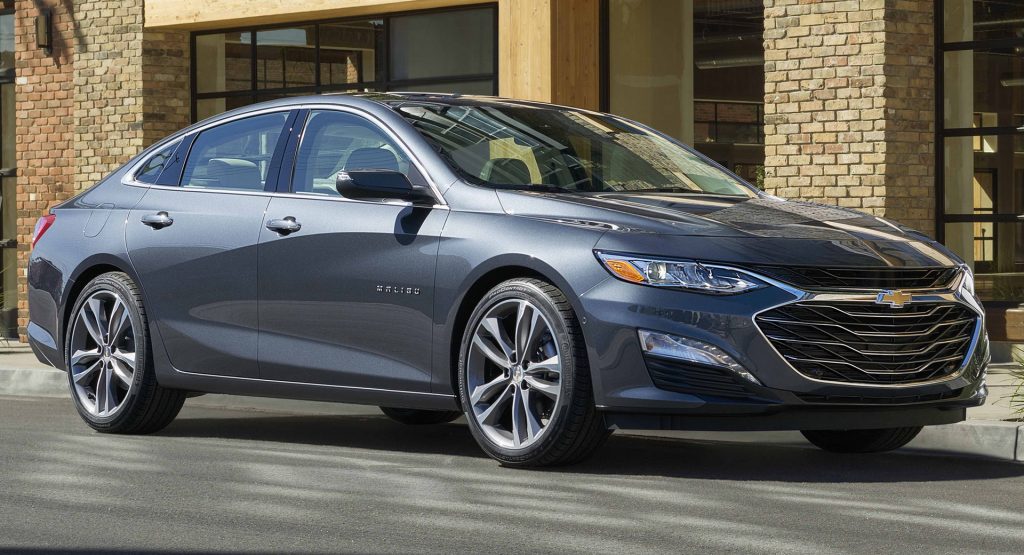
The aerodynamic body panels and low-mounted components are vulnerable to damage from rocks and debris common in off-road environments. The 17-inch wheels and low-profile tires, while appropriate for on-road handling, cannot accommodate the modifications needed for effective off-road traction.
Traction control systems in the Malibu Hybrid are optimized for on-road efficiency and safety, creating problems in off-road applications. The system’s aggressive intervention to prevent wheel spin often cuts power when some slip is necessary for forward progress in sand or snow.
The lack of all-wheel drive eliminates options for power distribution when front wheel traction is compromised. The vehicle’s weight distribution, with heavy battery components, creates handling characteristics unsuited for uneven terrain navigation.
Attempts to modify the Malibu Hybrid for improved off-road capability face fundamental architectural limitations. Suspension modifications can improve ground clearance, but cannot address the front-wheel-drive limitation or the hybrid system’s efficiency-focused programming.
Tire upgrades improve traction but create clearance issues and drivability problems with the existing calibration. Even extensive modifications cannot overcome the fundamental mismatch between the vehicle’s sedan-based hybrid architecture and the demands of off-road traction.
The Malibu Hybrid remains fundamentally unsuited for any serious off-road use, demonstrating the importance of purpose-built design for traction-demanding applications.
Also Read: 5 Pickups With Best Front-Driving Visibility and 5 With Big Blind Zones

